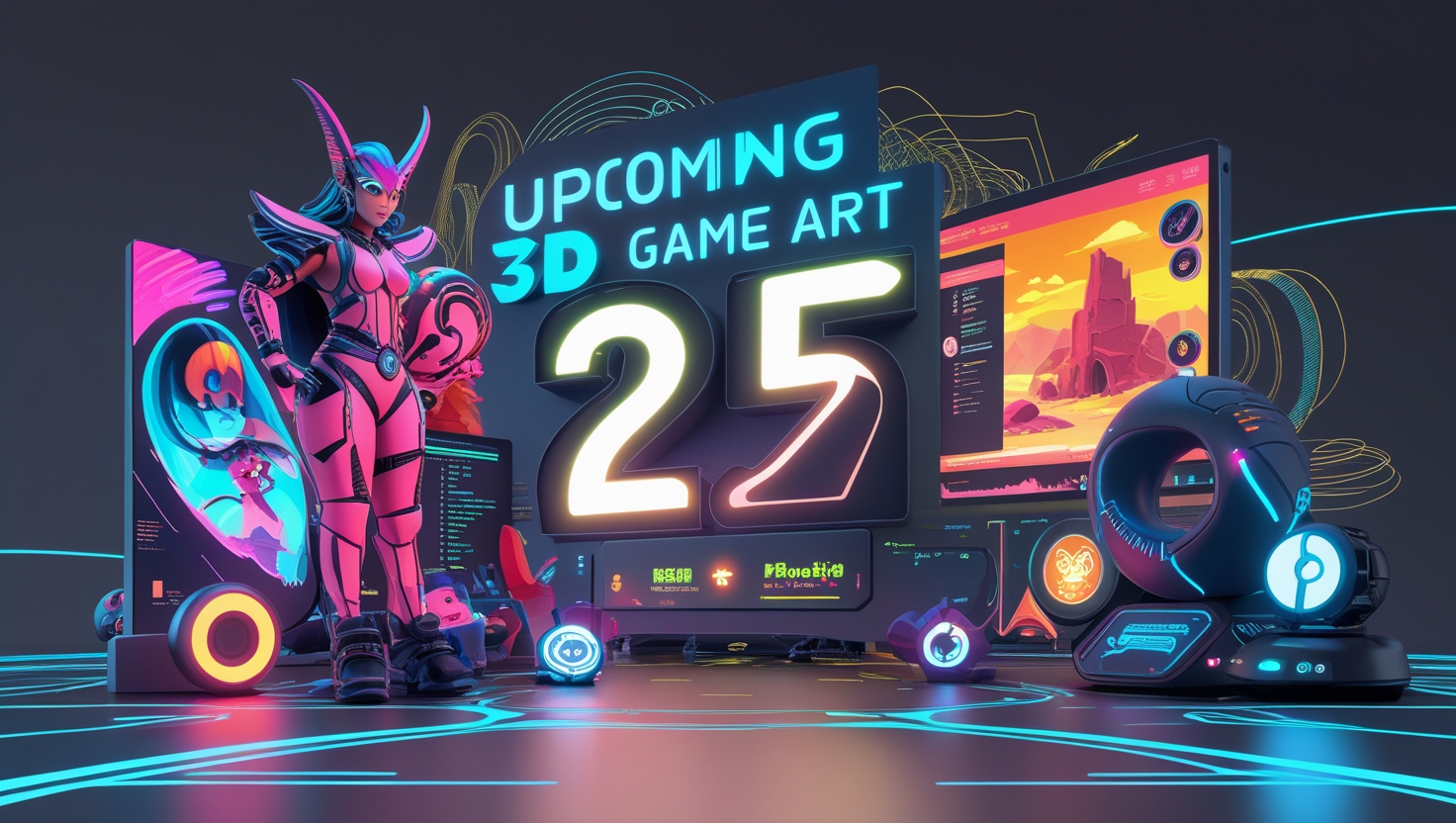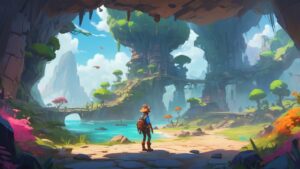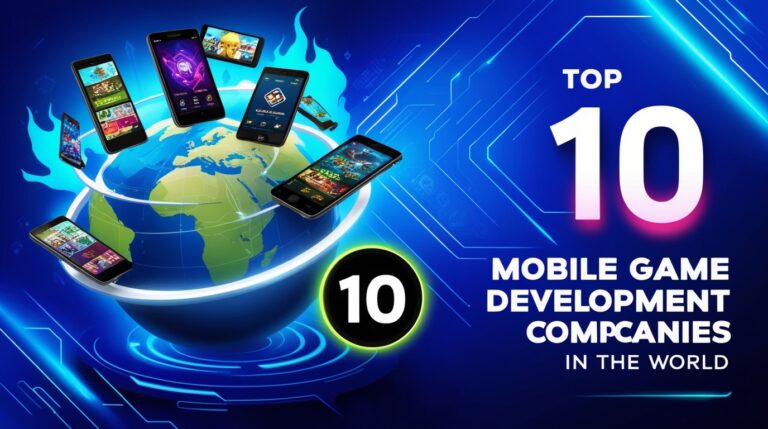Selecting the perfect 3d art design for your game can be a complex process, requiring careful decision about style and how to make your project truly distinctive, with a vast array of options and no clear roadmap, it’s easy to mimic existing trends, risking your game becoming just another face in the crowd. This guide cut through the confusion, highlighting essential 3d art styles and there ideal applications, complete with example. By mastering the intricacies of different 3D art styles, you can craft games that are visually captivating and leave a lasting impression on players.
A Glimpse into the Future of Gaming Visuals
The gaming industry is constantly evolving, and with it, the art that brings virtual worlds to life. As we look ahead to 2025, the world of 3D game art is poised to undergo significant transformations. From hyper-realistic environments to stylized aesthetics, the future of 3D art promises to redefine how we experience online games and free games. Whether you’re a 2D game artist exploring the shift to 3D or a developer considering a 3D outsourcing studio, understanding these trends is crucial to staying ahead in the competitive gaming landscape.
In this blog, we’ll explore the most exciting 3D game art trends expected to dominate in 2025. We’ll also discuss how these trends impact game development, the role of 2D game art outsourcing, and why partnering with a 3D outsourcing studio might be the key to creating visually stunning games.
The Evolution of 3D Game Art
Over the past decade, 3D game art has evolved from simple polygonal models to intricate, lifelike designs. Advances in technology, such as real-time rendering, photogrammetry, and AI-driven tools, have pushed the boundaries of what’s possible in gaming visuals. As we approach 2025, these advancements are expected to reach new heights, offering players immersive experiences like never before.
For developers and artists, this means embracing new techniques, tools, and workflows. Whether you’re creating 3D art for AAA titles or free games, staying updated on these trends is essential to delivering cutting-edge visuals.
Top 3D Game Art Trends for 2025
Here are the most anticipated 3D game art trends that will shape the gaming industry in 2025:
- Hyper-Realistic Environments
Hyper-realism has been a growing trend in 3D game art, and by 2025, it will reach new levels of sophistication. With advancements in ray tracing, global illumination, and 4K textures, game environments will look almost indistinguishable from real life. Expect to see:
- Detailed foliage, weather effects, and dynamic lighting.
- Realistic physics simulations for water, fire, and debris.
- Seamless integration of photogrammetry to capture real-world textures and objects.
For online games and free games, hyper-realistic environments will enhance immersion, making players feel like they’re truly part of the game world.
- Stylized and Non-Photorealistic Rendering (NPR)
While hyper-realism is on the rise, stylized 3D art will continue to thrive in 2025. Games like The Legend of Zelda: Breath of the Wild and Genshin Impact have proven that stylized visuals can be just as captivating as realistic ones. Key trends include:
- Hand-painted textures and cel-shading techniques.
- Bold, vibrant color palettes and exaggerated proportions.
- Unique art styles that reflect a game’s narrative and tone.
Stylized 3D game art is particularly popular in free games and indie titles, where creativity and originality often take center stage.
- Procedural Generation and AI-Driven Art
Procedural generation and AI are revolutionizing how 3D art is created. By 2025, these technologies will enable artists to generate vast, intricate worlds with minimal manual effort. Key developments include:
- AI-powered tools for automating repetitive tasks, such as texture creation and asset placement.
- Procedural algorithms for generating terrain, buildings, and even entire ecosystems.
- Machine learning models that adapt to an artist’s style, streamlining the creative process.
For developers working with a 3D outsourcing studio, these tools will reduce production time and costs while maintaining high-quality visuals.
- Real-Time Rendering and Ray Tracing
Real-time rendering has become a game-changer for 3D game art, and by 2025, it will be more accessible than ever. Ray tracing, in particular, will play a significant role in creating lifelike lighting and reflections. Expect to see:
- Real-time ray tracing in online games and free games, not just AAA titles.
- Enhanced visual fidelity with minimal performance impact, thanks to optimized rendering engines.
- Dynamic lighting that adapts to in-game events, such as explosions or weather changes.
These advancements will make games more visually stunning and immersive, even on mid-range hardware.
- Virtual Reality (VR) and Augmented Reality (AR) Art
As VR and AR technologies continue to mature, 3D game art will adapt to these platforms. By 2025, we can expect:
- Highly detailed, interactive environments designed specifically for VR.
- AR games that blend 3D art with the real world, creating unique gameplay experiences.
- New artistic techniques to optimize performance and reduce motion sickness in VR.
For 2D game artists transitioning to 3D, VR and AR offer exciting opportunities to explore new creative frontiers.
- Environmental Storytelling
In 2025, 3D game art will play a bigger role in storytelling. Environmental storytelling uses visuals to convey narrative elements, such as a character’s backstory or a world’s history. Trends include:
- Intricately designed environments that reveal clues about the game’s lore.
- Interactive objects and set pieces that encourage exploration.
- Dynamic environments that change based on player actions.
This trend is particularly effective in online games and free games, where immersive storytelling can set a title apart from the competition.
- Cross-Platform Art Optimization
With the rise of cross-platform gaming, 3D game art will need to be optimized for a variety of devices, from high-end PCs to mobile phones. Key trends include:
- Scalable assets that maintain visual quality across different resolutions.
- Efficient use of polygons and textures to ensure smooth performance on all platforms.
- Cloud-based rendering solutions for streaming high-quality visuals to low-end devices.
For developers working with a 3D outsourcing studio, cross-platform optimization will be a top priority in 2025.
The Role of 2D Game Art Outsourcing in a 3D World
While 3D game art is taking centre stage, 2D game art remains an essential part of the gaming industry. Many games, especially free games and mobile titles, still rely on 2D art for characters, UI elements, and promotional materials. As a result, 2D game art outsourcing will continue to play a vital role in game development.
In 2025, we can expect 2D game artists to collaborate closely with 3D artists, creating hybrid visuals that combine the best of both worlds. For example, a 2D game artist might design concept art that a 3D outsourcing studio uses to create 3D models. This collaborative approach ensures a cohesive visual style and maximizes efficiency.
Why Partner with a 3D Outsourcing Studio?
Creating high-quality 3D game art requires specialized skills and resources. For many developers, partnering with a 3D outsourcing studio is the most cost-effective and efficient way to achieve their vision. Here’s why:
- Access to Top Talent: Outsourcing studios employ skilled 3D artists with expertise in the latest tools and techniques.
- Cost Savings: Outsourcing eliminates the need for in-house teams, reducing overhead costs.
- Faster Turnaround Times: Experienced studios can deliver high-quality assets quickly, speeding up production.
- Scalability: Outsourcing allows developers to scale their art production based on project needs.
Whether you’re developing online games, free games, or AAA titles, a 3D outsourcing studio can help you stay competitive in 2025 and beyond.
Challenges and Opportunities in 3D Game Art
While the future of 3D game art is bright, it also comes with challenges:
- Rising Expectations: Players demand increasingly realistic and immersive visuals, putting pressure on developers to deliver.
- Technical Limitations: Balancing visual quality with performance remains a challenge, especially for cross-platform games.
- Cost and Complexity: Creating high-quality 3D art requires significant time and resources.
However, these challenges also present opportunities for innovation. By embracing new technologies and trends, developers can create games that captivate players and stand out in a crowded market.
Conclusion
The world of 3D game art is on the brink of a revolution, and 2025 promises to be an exciting year for gaming visuals. From hyper-realistic environments and stylized aesthetics to AI-driven tools and real-time rendering, the future of 3D art is full of possibilities.
For developers, staying ahead of these trends is essential to creating games that resonate with players. Whether you’re a 2D game artist exploring 3D or a developer considering a 3D outsourcing studio, now is the time to embrace the future of gaming art.
As we look ahead to 2025, one thing is clear: the games of tomorrow will be more visually stunning and immersive than ever before. By leveraging these trends and partnering with the right talent, you can create online games and free games that leave a lasting impression on players worldwide. So, gear up, embrace the future, and let your creativity shine in the world of 3D game art!




